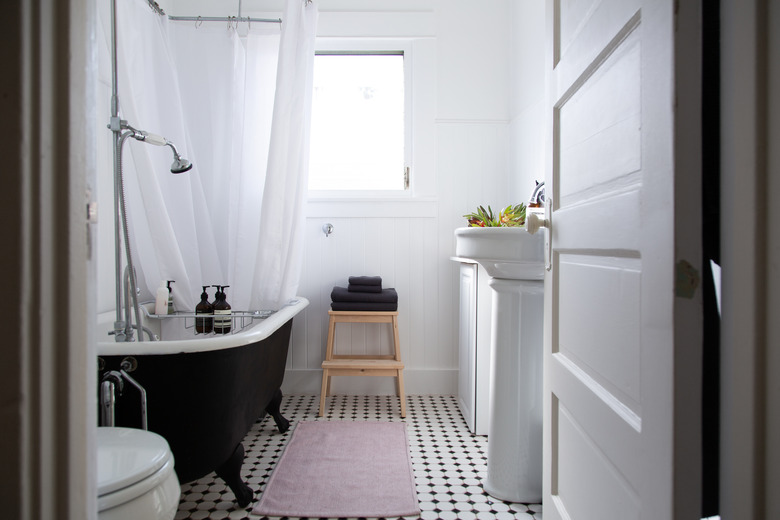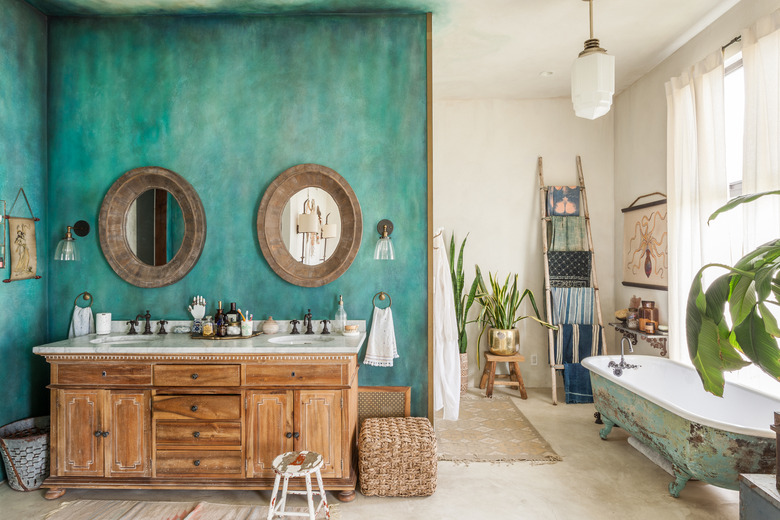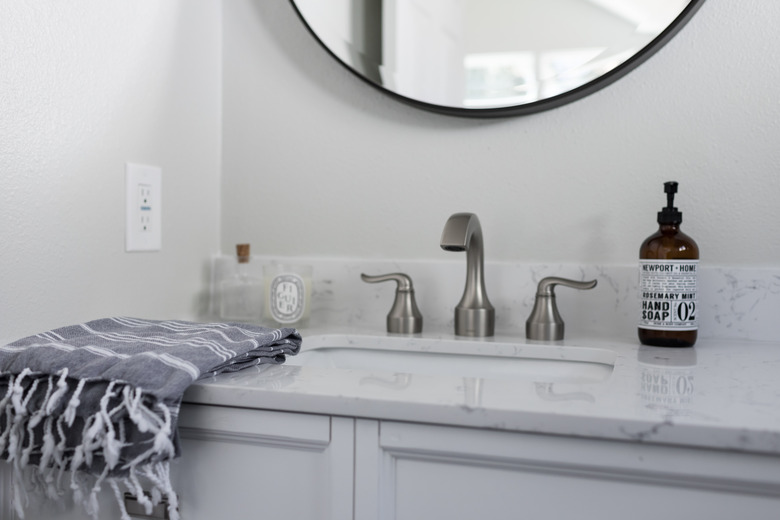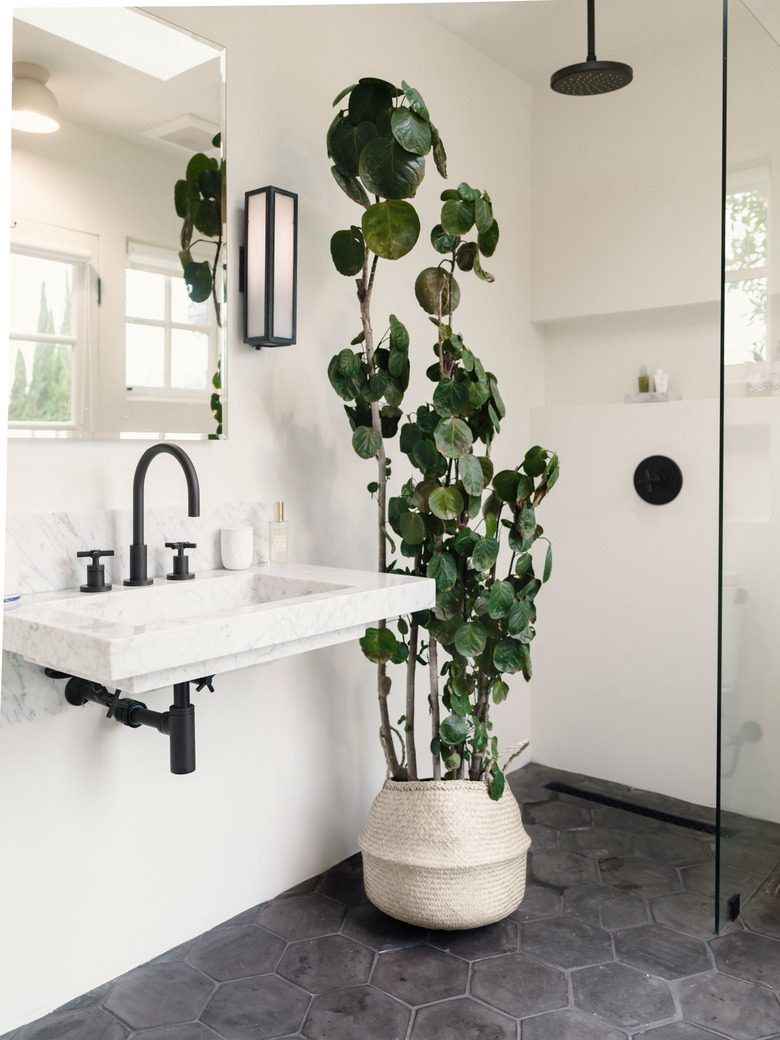Bathroom Remodel Costs: Tips To Save On Bathroom Makeovers
According to HomeAdvisor, the average 2020 bathroom remodel costs about $10,500. If that number makes you pucker, you're in the right place. There are, fortunately, several ways to save money on your bathroom makeover and pay much less. You just need to learn a few tricks of the bargain remodel trade.
Bathroom Remodeling: Divide and Conquer
Bathroom Remodeling: Divide and Conquer
You'll save a lot of cash if you tackle your bathroom makeover yourself and leave the professionals out of the equation. It's important, however, that you understand your DIY limits. Leaky pipes and other issues can cost you more in the long run, so only do the jobs with which you're comfortable. The more work you take on for your general contractor, the smaller his bill will be – but that doesn't mean you shouldn't use a contractor at all.
You may, for example, install a new sink and faucet yourself but have a plumber connect it. You'll also save money by taking on time-consuming but simple tasks, like painting. Another great way to save is to do the demolition yourself. This saves you money on labor costs and lets you take a sledgehammer to that ugly sink you've always hated.
You can also save by cutting out the middleman and buying your fixtures yourself. This allows you to do some bargain shopping and reduces the billable time your general contractor would spend helping you choose fixtures and then running to get them. If your municipality allows, you can also save a bit of contractor time by pulling any necessary building permits yourself.
Take a Tile Break
Take a Tile Break
Durable, easy to clean and waterproof, tile is a popular choice for bathroom walls and floors. If you're doing your bathroom makeover on a budget, however, question how much tile you really need. Tile gets expensive in a hurry, so you may want to minimize the amount you use.
Consider installing an acrylic tub surround rather than tiling your shower. You can also save money by installing a vinyl or linoleum floor. Wainscoting or wallpaper can substitute for tiled bathroom walls and look just as good.
If you just can't live without a tile floor and wall tiles, consider using a basic, inexpensive tile and adding a handful of decorative tiles to break things up without breaking the bank. Check local yard sale websites too, as some people have too much tile left after their bathroom makeovers and will gladly sell it cheap.
Live With Your Bathroom Design and Layout
Live With Your Bathroom Design and Layout
When embarking on a bathroom makeover, it's fun to fantasize about all the things you want to change in your bathroom. You'll need to come back down to earth, though, if your budget isn't as rich as your imagination. Yes, your bathtub would look amazing underneath that skylight, but moving plumbing and plumbing fixtures around can really run up a bathroom remodel cost.
According to HGTV, you must add about $5,000 to your bathroom remodel costs for every plumbed-in fixture you move. Moving plumbing around can also force you to familiarize yourself with your local building codes and apply for special permits. Some building permits allow you to remove and replace existing structures but not change their location. Don't change your layout unless your bathroom is completely unlivable the way it is.
Bathroom Remodeling: Reuse and Recycle
Bathroom Remodeling: Reuse and Recycle
Take a good, hard look at the components of your bathroom and ask yourself what it really needs. Is a new toilet necessary, or could a new seat and a few tank parts freshen up your existing one? You may find that some new faucets, an upgraded shower head and some funky new cabinet hardware are all your bathroom makeover really needs.
If your bathtub looks a little worse for wear, consider recoating it rather than replacing it. You can purchase a tub recoating kit for around $30 and use it to either touch up scratches and chips or recoat the entire tub. If your sink, tub and toilet truly are past it, consider replacing them with something used. Habitat for Humanity, for instance, often maintains stores where it sells gently used toilets and fixtures at a discount. Buying here saves money and supports a good cause.
Note that in shower stalls, the slope and shape of the pan are crucial for proper drainage. If your shower is in bad shape and you want to save it, have a professional recoat it rather than doing the job yourself. It'll cost less than replacing it and save you lots of potential headaches and leaks in the future. This isn't a corner you want to cut.
Bathroom Vanities and Countertops
Bathroom Vanities and Countertops
With a little shopping around, you can find an affordable bathroom vanity at your local home improvement store. You can also make your own from an old dresser. Simply cut a hole in the top of the dresser for the sink and cut away the back to make room for the plumbing. Using old dressers as bathroom vanities is very trendy in bathroom makeovers at the moment, and it's cheap.
There are also ways to save on your vanity's countertop. You can get an inexpensive countertop material like laminate, but you don't have to. If you want a luxury feel, consider going with granite or another type of stone. These materials are generally more expensive, but many come out of the quarry with unwanted imperfections. Dealers sell these slabs at deep discounts, and if the imperfection happens to fall where your sink will go, they'll work for you.
Shelving Bathroom Makeovers
Shelving Bathroom Makeovers
One of the issues you might address during your bathroom remodeling is storage space. If your bathroom is lacking it, now is a good time to remedy the problem. When doing so, consider adding open shelves instead of drawers and cabinets. Of course, you'll want a few concealed places to stash things like wart remover and hemorrhoid cream, but opt for open shelves where you can.
Shelves cost less than cabinets, and they work well for storing things like extra towels and toilet paper. They're also handy in small bathrooms, making the space feel less cramped than walls of cabinet doors. Shelves also work well where a cabinet would fit but an open cabinet door would not. Using shelves instead means your kids won't be slamming the cabinet door into the side of the toilet.
Look at Cost and Value
Look at Cost and Value
There's nothing wrong with keeping your bathroom remodel costs low, but don't skimp so much that you regret it. If you've always wanted a rain shower head, for instance, get one and try to find a different corner to cut. Don't throw money into a bathroom makeover and end up hating everything about it.
Make sure you look at value when shopping too rather than just cost. A low-flow toilet may cost you a little bit more but could ultimately save enough water to pay for itself. A high-quality bathroom vent is important as well. Without good ventilation, your new vanity and wainscoting could end up ruined by mold and mildew.
Choose your fixtures wisely too. Again, it's OK to stick to a small budget, but go too cheap, and you could find yourself repairing and replacing parts of your new bathroom sooner than should be necessary. Always factor added values like warranties and energy efficiency into your calculations.
Stick to the Remodeling Project Plan
Stick to the Remodeling Project Plan
and figure out how much your Now that you know some money-saving tricks, use them to create a budget and figure out how much your bathroom remodel costs. Figure out what you can do yourself and shop around for the items you need, making note of their price tags. List them all on paper and add it up to see what putting it all together will cost. You may have to make a few tweaks to meet your budget.
Once you have your budget and your plan mapped out, go get what you need and refer to your plan often. If you visit your local home center without a budgeted shopping list, you could easily spend more than you intended. Plan out everything and then stick to the plan to stay on target.
It's good to have your plan in place, but remember that even the best planners can run into unexpected issues that result in cost overruns. Hopefully, you won't come across any major issues, but don't expect your remodel to go off without a single hitch. Instead, pad your budget by about 15 or 20 percent so that you can deal with minor issues as they pop up.



